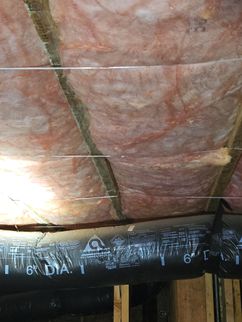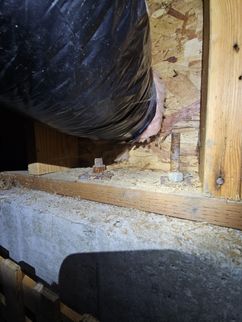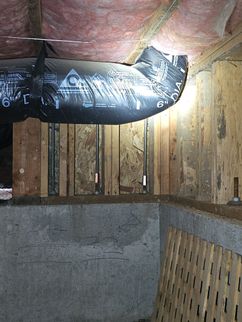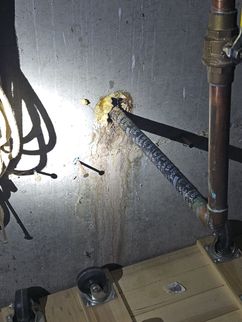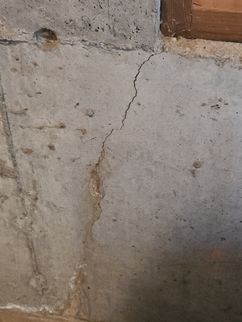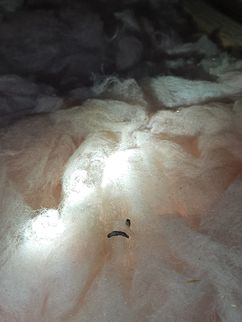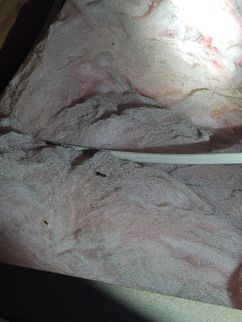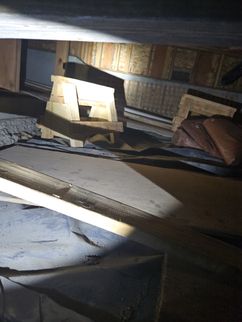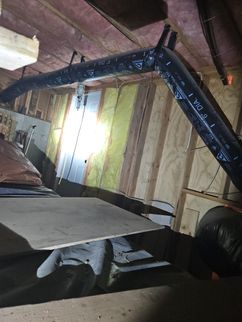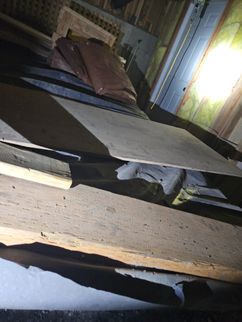The Scope and Purpose of a Home Inspection
Purchasing property involves risk
The purpose of a home inspection is to help reduce the risk associated with the purchase of a structure by providing a professional opinion about the overall condition of the structure. A home inspection is a limited visual inspection, and it cannot eliminate this risk. Some homes present more risks than others. We cannot control this, but we try to help educate you about what we don’t know during the inspection process. This is more difficult to convey in a report and one of many reasons why we recommend you attend the inspection.
A home inspection is not an insurance policy.
This report does not substitute for or serve as a warranty or guarantee. Home warranties can be purchased separately from insuring firms that provide this service.
A home inspection is visual and not destructive.
The descriptions and observations in this report are based on a visual inspection of the structure. We inspect the aspects of the structure that can be viewed without dismantling, damaging, or disfiguring the structure and without moving furniture and interior furnishings. Areas that are concealed, hidden, or inaccessible to view are not covered by this inspection. Some systems cannot be tested during this inspection as testing risks damaging the building. For example, overflow drains on bathtubs are generally not tested because if they were found to be leaking, they could damage the finishes below. Our procedures involve non-invasive investigation and non-destructive testing, which will limit the scope of the inspection.
This is not an inspection for code compliance.
This inspection and report are not intended for city / local code compliance. During the construction, process structures are inspected for code compliance by municipal inspectors. Framing is open at this time, and conditions can be fully viewed. Framing is not open during inspections of finished homes, limiting the inspection. All houses fall out of code compliance shortly after they are built, as the codes continually change. National codes are augmented at least every three years for all disciplines. Municipalities can adopt and phase in sections of the codes on their timetables. There are generally no requirements to bring older homes into compliance unless substantial renovation is being done.
This is just our opinion.
Construction techniques and standards vary. There is no one way to build a house or install a system in a house. The observations in this report are the opinions of the home inspector. Other inspectors and contractors are likely to have some differing opinions. You are welcome to seek opinions from other professionals.
The scope of this inspection
This inspection will include the following systems: exterior, roof, structure, drainage, foundation, attic, interior, plumbing, electrical, and heating. The evaluation will be based on limited observations that are primarily visual and non-invasive. This inspection and report are not intended to be technically exhaustive.
Your expectations
The overall goal of a home inspection is to help ensure that your expectations are appropriate for the house you are proposing to buy. To this end, we assist with the discovery by showing and documenting observations during the home inspection. This should not be mistaken for a technically exhaustive inspection designed to uncover every defect in a building. Such inspections are available, but they are generally cost-prohibitive to most homebuyers.
Your participation is requested.
Your presence is requested during this inspection. A written report will not substitute for all the possible information that can be conveyed verbally by a shared visual observation of the conditions of the property.
How to Read This Report
Getting the Information to You
This report is designed to deliver important and technical information in a way that is easy for anyone to access and understand. If you are in a hurry, you can take a quick look at our "Summary Page” and quickly get the critical information for important decision-making. However, we strongly recommend that you take the time to read the full Report, which includes digital photographs, captions, diagrams, descriptions, videos, and hot links to additional information.
The best way to get the layers of information presented in this report is to read your report online, which will allow you to expand your learning about your house. You will notice some words or series of words highlighted in blue and underlined – clicking on these will provide you with additional information.
This report can also be printed to a PDF file and printed on paper as desired.
Chapters and Sections
This report is divided into chapters that parcel the home into logical inspection components. Each chapter is broken into sections that relate to a specific system or component of the home. You can navigate between chapters with the click of a button on the left-side margin.
Most sections will contain some descriptive information in black font. Observation narrative, done in colored boxes, will be included if a system or component is found to be significantly deficient in some way or if we wish to provide helpful additional information about the system or the scope of our inspection. If a system or component of the home was deemed to be in satisfactory or serviceable condition, there might be no narrative observation comments in that section, and it may simply say “tested” or “inspected.”
Observation Labels
All narrative observations are colored, numbered, and labeled to help you find, refer to, and understand the severity of the observation. Observation colors and labels used in this report are:
- Major Concern:Repair items that may cost significant money to correct now or in the near future, or items that require immediate attention to prevent additional damage or eliminate safety hazards.
- Repair:Repair and maintenance items noted during inspection. Please note that some repair items can be expensive to correct such as re-finishing hardwood floors, but are considered simply repair items due to their cosmetic nature.
- Recommended Maintenance:These are repair items that should be considered "routine home ownership items," such as servicing the furnace, cleaning the gutters or changing the air filters in the furnace.
- Recommended Disclosure Items:These are observations for which we recommend that sellers disclose more information to buyers so that buyers can better understand recent servicing, repairs or maintenance or even construction history or building and site design.
- Monitor:Items that should be watched to see if correction may be needed in the future.
- Improve or Upgrade:Observations that are not necessarily defects, but which could be improved for safety, efficiency, or reliability reasons. These are often items which reflect changes in building codes or standards.
- Efficiency:Denotes observations that are needed to make the home more energy efficient as well as to bring the home up to modern insulation standards. This category typically includes windows and insulation. Other items, such as lighting and appliances, are not inspected for their energy status.
- Inspection Notes:Aside information and /or comments elaborating on descriptions of systems in the home that the inspector might find useful to purchase decisions or home ownership. .
- Limitations:Conditions present at the time of inspection which limited the scope of this visual inspection
Summary Page
The Summary Page is designed as a bulleted overview of all the observations noted during the inspection. This helpful overview is not a substitute for reading the entire inspection report. The entire report must be read to get a complete understanding of this inspection report, as the Summary Page does not include photographs or photo captions.
Moisture Meter Testing
Where moisture meter testing is indicated in this report, a Protimiter Survey Master Dual Function was used.
Summary
Major Concerns
No major concerns were noted during this visual inspection.Repairs
- E-3 Exterior:
LOST SEAL IN DOOR GLASS
A failed insulated glass unit (IGU) was noted in one of the exterior doors - exterior basement door. This is when the glass has a cloudy appearance from condensation between the panes of glass. This cannot be cleaned, so the IGU needs to be replaced. This is a cosmetic defect that does not significantly impact the performance of the glass just the appearance. Hire a glass replacement company to further evaluate this glass and replace as needed.
- DPB-1 Decks, Porches and Balconies:
TUNE-UP DECK REPAIRS / MAINTENANCE NEEDED
Tune-up repairs are needed to the decks. This building has two decks on the back side of the building. The decks seems to have had some updates since the original build. Examples of specific observations noted during the inspection include:
Repairs
- The posts for the small deck are in soil contact and vulnerable to wood decay. Updating these posts will eventually be needed. The south post had some minor decay that I could access.
Improvements
- The 4x4 deck railing posts are notched - this weakens the railing system and is not recommended. This is common in older deck guard systems.
- The graspable handrail for the deck stairs is not the correct profile - an improved graspable handrail is recommended for the back deck stairs.
Notes
- The large deck has a better footing system than the small deck.
- Several decking boards seem to be recently updated
Recommendation
Hire a qualified contractor to further evaluate and implement repairs and improvements as recommended to ensure safe and reliable performance and to prolong the useful life of the decking systems here.
- EDF-1 Electric Distribution and Finish:
REPAIR UNDERCABINET LIGHTS
One of the under cabinet lights is out. Repair / replace the inoperative light as needed.
- EDF-2 Electric Distribution and Finish:
REPLACE MISSING RECEPTACLE COVER
Replace the missing electric receptacle cover on the exterior.
- EDF-3 Electric Distribution and Finish:
REPAIR THE LAUNDRY ROOM LIGHT
The laundry room light is out. This may be the ballast of a fluorescent light. Repair as needed.
- EDF-4 Electric Distribution and Finish:
NO CARBON MONOXIDE ALARMS FOUND
The installation of carbon monoxide alarms is recommended for all homes that have fuel-burning appliances such as gas or oil furnaces, gas water heaters, gas ovens and cook-tops, gas fireplaces, and wood stoves. Carbon monoxide is a colorless, odorless gas that can cause sickness, nausea, and even death. For more information, consult the Consumer Product Safety Commission at 1-800-638-2772 (C.P.S.C.) Modern standards in many states now recommend one CO alarm outside of all bedrooms and at least 1 per floor of the house.
- MB-2 Main Bathroom:
BROKEN FAUCET HANDLE - MAIN BATH
The porcelain faucet handle is broken and requires replacement.
- MB-3 Main Bathroom:
LEAKING SHOWER HEAD - MAIN BATH SHOWER
The shower head in the main bath tub is leaking and requires repair. Leaky shower heads are common and not a significant concern. Adjust as needed to prevent leakage at the shower head.
- A-2 Attic:
INACCESSIBLE ATTIC AREA
Part of the attic was not accessible - see the 2nd floor. Additional attic accesses are recommended so that all of the attic spaces can be accessed and inspected. Install additional access hatches as needed and re-inspect the inaccessible areas of the attic. Standards recommend an access opening of 30 inches x 22 inches when there is greater than 30 sq/ft of attic space.
✒️ - I looked several times in the closets and could not find an access for the 2nd floor.
Recommended Maintenance
- G1-1 Grounds:
TREE AND VEGETATION PRUNING
Pruning trees, branches and vegetation away from the building is recommended. Where trees, branches and large shrubs can provide rodent access to the roof, a minimum 6-foot clearance is recommended as many rodents can jump 6-feet. All vegetation, including smaller landscaping such as grasses, flowers and shrubs should be kept 1-foot off the house to eliminate contact which could trap moisture against the building.
- E-1 Exterior:
JOINT FLASHING DETAILS
The end joints between pieces of siding are missing joint flashings. These are recommended behind the end joints in the siding for a weather-proof detail. In the absence of these flashings, keep end joints sealed with caulking. Caulking is an approved method for sealing these joints, but is higher maintenance, less reliable and more unsightly. Attached are some photos and diagrams showing how butt joint flashings can be retrofit.
- E-2 Exterior:
LOCALIZED PAINT TOUCH UP NEEDED
The exterior of the building seems to have been recently panted. A few touch up areas are needed:
- HCFV-2 Heating, Cooling, Fireplaces and Ventilation:
DUCTED HEAT PUMP SERVICING RECOMMENDED
Heating and cooling contractors recommend annual servicing of heat pump systems to maximize the useful life and efficiency of heating and cooling equipment. No recent service records were noted on this system. I recommend having this system serviced and further evaluated by a qualified heating contractor if it has not been done in the last year. The system was tested in heating mode during the inspection and responded well to normal operating controls. Examples of testing procedures and observations noted during the inspection include:
- The compressor was operative at the time of inspection
- Repair the damaged insulation on the heat pump refrigerant lines.
- The air handler was nice and clean at the time of the inspection
- HCFV-5 Heating, Cooling, Fireplaces and Ventilation:
SCREEN RECOMMENDED FOR FIREPLACES
For improved child safety, consider installing a metal screen in front of the gas log fireplace glass. These screens are required on newer gas logs. The glass panels on gas fireplaces and even materials around the fireplace can become very hot and pose a burn hazard. Use caution when using these fireplaces when small children are present.
- HCFV-6 Heating, Cooling, Fireplaces and Ventilation:
GAS LOG FIREPLACES ARE SHUT DOWN
The gas log fireplace has been shut down and was not responding to normal operating controls. I recommend making this unit operational prior to listing the house.
✒️
- The fireplaces may have just been shut down for the summer time.
- RPWDO-2 Rodents, Pests and Wood Destroying Organisms:
REMOVE CELLULOSE DEBRIS FROM THE CRAWL SPACE
Wood and cellulose debris was noted in the crawl space. This can encourage wood-destroying organisms such as subterranean termites. Removal of all cellulose debris from the crawl space is recommended to eliminate conditions conducive to wood-destroying organisms. This should include the removal of all wood storage.
Recommended Disclosure Items
- RCG-1 Roof, Chimney and Gutters:
NEW ROOF NOTED
The roofing material on this building is a recently installed architectural grade shingle. These are often rated as 30-40 year shingles. In practice, as a roof assembly, I find these last closer to 18-23 years, depending on the quality of the installation, the steepness of the roof, and the amount of exposure. The installation appears neat and professional. Many professional roofing companies will offer limited workmanship warranties. Please note that roofs are not a shingle, they are an assembly, and they require regular cleaning and maintenance to keep them performing reliably. Examples of observations noted during the inspection include:
- No drip edge flashings have been installed at roof terminations. These are now required. I would install during the next re-roof.
- Quality externally baffled ridge vents noted
- Nice straight rows, no buckling noted
- Metal valleys noted
Recommendation
Disclose any warranty and/or installer information for this new roof installation.
- P-1 Plumbing:
SEWER SCOPE RECOMMNEDED
An evaluation of the sewer line below the ground is beyond the scope of this inspection. Due to the age and location of the building, a sewer scope is recommended to further evaluate the sewer line and the below ground connections between the house and the municipal sewer line. Sewer scopes are done using video cameras and can reveal the materials, condition and reliability of the sewer line. If that has been done recently, I recommend disclosing available information. If this has not been done recently, this would be valuable information to disclose to a buyer.
- AP-1 Additional Plumbing:
ABANDONED IRRIGATION SYSTEM
This site has an old irrigation system that appears to be disabled. Disclose any additional information about this system. I am guessing that this piping can just be removed as this system no longer looks functional.
Items for Monitoring
- SB-1 Structure and Basement:
A FEW WATER STAINS ON THE BASEMENT FOUNDATION WALLS
The basement was dry at the time of inspection. A few signs of seepage were noted on the basement walls. This is unfinished space so it likely does not matter much if some seasonal seepage occurs.
- One water stain was noted below the main water pipe inlet. Ideally the pipe here is sleeved and the hole sealed for moisture control.
- A small crack was noted on the north side. This may require some seal up. Monitor during wet weather.
Recommendation
Monitor during wet weather and seal up as needed.
- RPWDO-1 Rodents, Pests and Wood Destroying Organisms:
SIGNS OF RODENTS
Evidence of rodent entry into the attic was discovered. It appeared to be old, but this is difficult to verify during a one-time inspection. I recommend disclosing any history of rodent problems and/or treatment.
Recommendation
A trapping and baiting program should be implemented to determine if these conditions are old. In general, rodent control should be considered an ongoing part of home ownership in this region. If rodents are trapped, additional exclusion and prevention work is needed. Basic rodent proofing recommendations include:
- Prune trees off the house and keep vegetative cover away from the building to reduce nearby habitat
- Seal all openings to the exterior - use copper wool for small holes.
- Implement a trapping plan to target entry points and rodent-proof as needed.
- Regular baiting can help, but this does distribute poison into the nearby food chain.
Examples of observations noted during the inspection include:
- Rodent feces noted in the attic - these look older
- Rodent bait stations noted around the exterior
Improve Or Upgrade Items
- RCG-2 Roof, Chimney and Gutters:
UPPER DOWNSPOUTS DRAIN ONTO LOWER ROOF
Several of the downspouts on the upper gutter system are terminating onto the lower roof. This is industry standard practice but it will prematurely deteriorate the roofing shingles in these locations and it is not recommended by many shingle manufacturers. I recommend extending the downspouts into lower gutters to better protect the roof.
- ES-2 Electric Service:
NO SURGE PROTECTION FOUND
No surge protection was noted at the electrical equipment today. The 2020 edition of the National Electric Code requires type I or type 2 surge protection on new or renovated homes. Though not adopted yet this code change reflects the growing complexity of electric appliances in our houses and the growing risk of damage to electrical equipment due to internal or external electrical surges. This short video explains more about electrical surges and surge protection. I recommend upgrading and adding surge protection for improved protection of the electrical appliances in this building. I would do this in the context of other electrical repairs or upgrades.
- ES-3 Electric Service:
IMPROVED CONDUCTOR IDENTIFICATION RECOMMENDED
The white conductors inside the electric panel at the breakers are not correctly identified as hot or ungrounded conductors - these should be painted in black or red ink for correct identification and improved safety. I would do this in the context of other electrical repairs or upgrades.
- EDF-5 Electric Distribution and Finish:
OLDER SMOKE ALARMS NOTED
There appear to be some old smoke alarms. Fire marshals recommended updating smoke alarms every 10 years to ensure reliable performance. Systematic updating of smoke and CO alarms is recommended.
- LF-2 Laundry Facilities:
MOISTURE ALARM RECOMMENDED
A moisture alarm with water shut-off features is recommended under the washing machine to protect against accidental leaks in the supply hoses. Pans can be effective when there is a drain, but even these will not protect against a burst supply connector. A moisture alarm with automatic shut-off will. Watts is a brand I have seen installed: Link.
Efficiency Items
- CS-3 Crawl Space:
SAGGING SUBFLOOR INSULATION NOTED
The under-floor insulation in the crawl space is sagging and not touching the sub-floor, as such, it is not performing as intended. Use inset string to support the sub-floor insulation up against the sub-floor. The insulation must be in substantial contact with the surface it is insulating to perform as intended.
📸 The Complete Report
Grounds
Drainage and Site
Window and Stairwells
Driveways/Walkways/Flatwork
Grounds, Trees and Vegetation
Exterior Stairs
Retaining Walls
Fences
Outbuildings, Trellises, Storage Sheds, Barns
Decks, Porches and Balconies
Wood Decks Porches and Balconies
Concrete Decks, Stoops, Landings and Porches
Water-Resistant Decks and Balconies
Electric Service
Electric Service Voltage Tested
Electric Service
Electric Service Equipment
Generator Equipment
Appliance Disconnects
Electrical Grounding System
Electrical Bonding System
Electric Distribution and Finish
Branch Wiring
Receptacles and Fixtures
Smoke and Carbon Monoxide Alarm Systems
Heating, Cooling, Fireplaces and Ventilation
Heating Systems
Air Filters
Cooling Systems and Heat Pumps
Heating and Cooling Distribution Systems
Mechanical Ventilation Systems
Gas Fireplaces
Solid Fuel Fireplaces
Plumbing
Water Service Supply
Distribution Pipe
Waste Pipe and Discharge
Exterior Hose Bibs
Additional Sinks
Sump Pumps and Drains
Sewage Ejector Pumps
Interior
Floors and Floor Materials
Walls, Ceilings, Trim, Hallways and Closets
Wall Insulation and Air Bypass
Stairs and Railings
Interior Doors
Windows
Kitchen
General Kitchen Photos
Sinks and Faucets
Cabinets and Countertops
Disposers
Dishwasher
Ventilation Method
Ranges, Ovens and Cooktops
Refrigerators
General Kitchen Condition
Powder Bathroom
General Bathroom Photos
Sinks and Cabinets
Toilet
Bathtub / Shower
Bathroom Ventilation
General Bath
Main Bathroom
General Bathroom Photos
Sinks and Cabinets
Toilet
Bathtub / Shower
Bathroom Ventilation
General Bath
Guest Bathroom
General Bathroom Photos
Sinks and Cabinets
Toilet
Bathtub / Shower
Bathroom Ventilation
General Bath
Attic
Attic Access
Roof Framing and Sheathing
Fire Separation and Fire Blocking
Attic Insulation
Attic and Roof Cavity Ventilation
General Comments
Building Characteristics, Conditions and Limitations
Type of Building : Single Family (2-story)
Approximate Square Footage: 2627
Approximate Year of Original Construction: 2001
Attending the Inspection: Owner
Occupancy: Occupied
Animals Present: No
Weather during the inspection: Cloudy, Light Rain
Approximate temperature during the inspection: Below 65[F]
Ground/Soil surface conditions: Dry
For the Purposes of This Report, the Front Door Faces: South
This home was occupied at the time of the inspection. Inspection of occupied homes presents some challenges as occupant belongings can obstruct visual inspection of and access to parts of the building. We do our best during inspection to work around belongings to discover as much as possible about the house without moving or damaging personal property, however, the presence of personal items does limit the inspection.
Grounds
Drainage and Site
Clearance to Grade: Standard
Downspout Discharge: Below grade
Site Description: Moderate slope
Window and Stairwells
None Noted
Driveways/Walkways/Flatwork
Driveway: Concrete, Pavers
Walkways: Concrete
Patios: Concrete
Grounds, Trees and Vegetation
Trees/Vegetation too near building: Yes - Prune Vegetation off House
TREE AND VEGETATION PRUNING
Pruning trees, branches and vegetation away from the building is recommended. Where trees, branches and large shrubs can provide rodent access to the roof, a minimum 6-foot clearance is recommended as many rodents can jump 6-feet. All vegetation, including smaller landscaping such as grasses, flowers and shrubs should be kept 1-foot off the house to eliminate contact which could trap moisture against the building.
Exterior Stairs
Exterior Stairs: Standard
Retaining Walls
Retaining Wall Material: None Noted
Fences
Exterior Fencing: None noted
Outbuildings, Trellises, Storage Sheds, Barns
None noted
Exterior
Siding and Trim
Trim Material: Wood
Siding Material: Cedar shingles, Fiber-cement
Manufacturers of fiber cement siding have done a poor job helping inspectors and consumers distinguish their products after installation; these products have few if any distinguishing characteristics. This report will site James Hardie manufacturers installation requirements for reference because they are the most common manufacturer of fiber cement siding and the various manufactures seem to share similar installation guidelines. Here is a link to the HZ-10 Best Practices Guide. However, reference of these guidelines in this report does not ensure that the fiber cement siding here is a James Hardie product.
JOINT FLASHING DETAILS
The end joints between pieces of siding are missing joint flashings. These are recommended behind the end joints in the siding for a weather-proof detail. In the absence of these flashings, keep end joints sealed with caulking. Caulking is an approved method for sealing these joints, but is higher maintenance, less reliable and more unsightly. Attached are some photos and diagrams showing how butt joint flashings can be retrofit.
LOCALIZED PAINT TOUCH UP NEEDED
The exterior of the building seems to have been recently panted. A few touch up areas are needed:
Eaves
Open rafters
Exterior Doors
Exterior Door Styles: Glass panel doors, Solid core
LOST SEAL IN DOOR GLASS
A failed insulated glass unit (IGU) was noted in one of the exterior doors - exterior basement door. This is when the glass has a cloudy appearance from condensation between the panes of glass. This cannot be cleaned, so the IGU needs to be replaced. This is a cosmetic defect that does not significantly impact the performance of the glass just the appearance. Hire a glass replacement company to further evaluate this glass and replace as needed.
Exterior Window Frames
Window Frames: Vinyl
Decks, Porches and Balconies
Wood Decks Porches and Balconies
Present
To see a prescriptive guide for residential wood deck construction click this link:
Structure: Ground contact treated lumber
Ledger Board: Standard
Guardrail: Standard
Decking Material: Softwood
This house has cedar softwood decking installed. The recommended maintenance of this type of decking is annual cleaning and staining with transparent or semi-transparent deck stain. It is common to use decking paints when the decking is older and in the last phase of its useful life, however, painting is not recommended as this can trap moisture in the wood, facilitate wood decay and lead to higher maintenance costs when prepping peeling paint. Annual cleaning and sealing is important to prevent the deck from becoming slippery and unsafe, especially as pollen organic growth accumulate on the decking.
Posts, Beams and Footings: Inspected
TUNE-UP DECK REPAIRS / MAINTENANCE NEEDED
Tune-up repairs are needed to the decks. This building has two decks on the back side of the building. The decks seems to have had some updates since the original build. Examples of specific observations noted during the inspection include:
Repairs
- The posts for the small deck are in soil contact and vulnerable to wood decay. Updating these posts will eventually be needed. The south post had some minor decay that I could access.
Improvements
- The 4x4 deck railing posts are notched - this weakens the railing system and is not recommended. This is common in older deck guard systems.
- The graspable handrail for the deck stairs is not the correct profile - an improved graspable handrail is recommended for the back deck stairs.
Notes
- The large deck has a better footing system than the small deck.
- Several decking boards seem to be recently updated
Recommendation
Hire a qualified contractor to further evaluate and implement repairs and improvements as recommended to ensure safe and reliable performance and to prolong the useful life of the decking systems here.
Concrete Decks, Stoops, Landings and Porches
Concrete Structure: Concrete entry
Water-Resistant Decks and Balconies
Water Proof Surfaces: None Noted
Garage
Garage General
Garage Type: Attached
Garage Doors and Automatic Openers
Overhead Garage Door Type: Metal
Automatic Garage Opener: Present
Garage Occupant Door: Solid Wood
Garage Floor
Garage Slab: Concrete
Garage Stairs
Garage Stairs: Standard
Vehicle Chargers
None noted
Roof, Chimney and Gutters
Roof Materials
Method of Roof Inspection: Walked on roof
Roof Style: Gable
Flashings, Valleys and Penetrations: Present and Visually Standard
Roof flashings are used to keep a roofing system waterproof where the roofing material starts, stops, changes direction, or is penetrated. During the inspection, we look for standard flashing techniques that could be considered normal or standard in our region. Damaged, incomplete or non-standard flashings can be a sign of an older or less reliable roofing system and may require repair. Any non-standard flashings noted during the inspection will be reported below if found.
Roof Covering Materials: Architectural grade composition shingle
Approximate Age of Roof Covering: New
Overlay Roof: No
Shingle Fastening Accessible For Inspection : Yes - New Installation - Fastening Looked Standard
This building has a very new composition roof installed. The shingles are not bonded together yet, so I was able to check the fastening pattern. Fastening looked correct where I spot-checked. Proper fastening of roofing shingles is critical to ensure reliable long-term performance. Fasteners should be specifically located in the correct area of the shingle and not high or low-nailed. Fasteners should also be driven straight and flush with the shingle. Over time, the shingles should start to bond and fastening will no longer be visible without prying the shingles apart, which we avoid doing during visual home inspections.
NEW ROOF NOTED
The roofing material on this building is a recently installed architectural grade shingle. These are often rated as 30-40 year shingles. In practice, as a roof assembly, I find these last closer to 18-23 years, depending on the quality of the installation, the steepness of the roof, and the amount of exposure. The installation appears neat and professional. Many professional roofing companies will offer limited workmanship warranties. Please note that roofs are not a shingle, they are an assembly, and they require regular cleaning and maintenance to keep them performing reliably. Examples of observations noted during the inspection include:
- No drip edge flashings have been installed at roof terminations. These are now required. I would install during the next re-roof.
- Quality externally baffled ridge vents noted
- Nice straight rows, no buckling noted
- Metal valleys noted
Recommendation
Disclose any warranty and/or installer information for this new roof installation.
Chimneys
Present
Chimney Material: Metal below siding
Chimney Flue Liners: Present
Skylights
None noted
Gutters and Downspouts
Gutter and Downspout Materials: Seamless Aluminum
UPPER DOWNSPOUTS DRAIN ONTO LOWER ROOF
Several of the downspouts on the upper gutter system are terminating onto the lower roof. This is industry standard practice but it will prematurely deteriorate the roofing shingles in these locations and it is not recommended by many shingle manufacturers. I recommend extending the downspouts into lower gutters to better protect the roof.
Fuel Storage and Distribution
Oil Storage
None noted
Propane Storage
Present, Leased Tank Sticker Noted
Storage Type: Above ground tank
Propane Tank Size: 120 gallons
Propane Tank Location: West side of building
Gas Meter
None noted
Gas, Propane and Oil Piping
Gas Piping Materials Noted: Steel, Copper
Electric Service
Electric Service Voltage Tested
Electric Service
Service Entrance: Below Ground
Meter Base Amperage: 200
Electric Service Equipment
Service Entrance (SE) conductor Size: Aluminum, 4/0, 200 amps
Main Panel Amperage: 200 amps
Electric Service Amperage: 200 amps
Main Electric Panel Location: Garage
Panel Manufacturer: Cutler Hammer
NO SURGE PROTECTION FOUND
No surge protection was noted at the electrical equipment today. The 2020 edition of the National Electric Code requires type I or type 2 surge protection on new or renovated homes. Though not adopted yet this code change reflects the growing complexity of electric appliances in our houses and the growing risk of damage to electrical equipment due to internal or external electrical surges. This short video explains more about electrical surges and surge protection. I recommend upgrading and adding surge protection for improved protection of the electrical appliances in this building. I would do this in the context of other electrical repairs or upgrades.
IMPROVED CONDUCTOR IDENTIFICATION RECOMMENDED
The white conductors inside the electric panel at the breakers are not correctly identified as hot or ungrounded conductors - these should be painted in black or red ink for correct identification and improved safety. I would do this in the context of other electrical repairs or upgrades.
MODERN AFCI PROTECTION IS A SAFETY IMPROVEMENT
AFCI (arc fault protection) is now required on all branch circuits supplying outlets or devices installed in residential dwelling unit kitchens, family rooms, dining rooms, living rooms, parlors, libraries, dens, bedrooms, sunrooms, recreation rooms, closets, hallways, laundry areas, and similar rooms and areas. The goal of this protection is to reduce risks of electrical fires. Consult with a licensed electrician about improving circuit protection as desired. I would consider this improvement in the context of other electrical repairs or upgrades. Please note that if you add or replace receptacle outlets to the existing system, they should comply with modern AFCI standards.
Generator Equipment
Portable generator
MANUAL TRANSFER SWITCH FOR A GENERATOR
This building has a transfer switch for a generator for backup electric power supply - see the manual transfer switch on the exterior of the building to back-feed the panel. Generator systems are beyond the scope of this inspection. I recommend disclosing more information regarding the operation and maintenance of this system. Generators need to be run and serviced regularly to ensure reliable operation.
✒️
- Is there a generator included in the sale?
Appliance Disconnects
Disconnects Noted: Heat Pump
Electrical Grounding System
Present - Could Not Confirm
During a home or property inspection, every effort is made to inspect the visible components of the electrical system grounding. The grounding system is critical for safely discharging electrical surges, especially in the case of lightning strikes. There is no way in the context of a home inspection to verify the "effectiveness" of the grounding system as much of the system is not visible, and there are no practical tests one can perform in the way we can test a furnace or a plumbing fixture. However, many things can lead me to recommend further evaluation of the grounding system by a licensed electrical contractor, and they will be documented in the observations below if discovered.
Electrical Bonding System
Present - Could Not Confirm
During the inspection, I attempt to visually document electrical system bonding. There is no way in the context of a home inspection to verify the "effectiveness" of system bonding. All metallic systems in the building are required to be "bonded" (connected) to the the building's electrical grounding system. Bonding creates a pathway to shunt static charges (that would otherwise build up on the system) to earth, and to provide a pathway to trip a breaker in the event that these bonded metallic components became energized. There are many things that can lead me to recommend further evaluation of this system by a licensed electrical contractor and they will be documented as repair items in the observations below if discovered.
Electric Distribution and Finish
Branch Wiring
Wire Material: Copper, Multi-strand Aluminum
Wiring Method: Non-metallic sheathed cable
Receptacles and Fixtures
Inspection Method: Tested All Accessible
During inspection I make an effort to test and inspect all accessible electric receptacles and switches. In general, the scope of testing is directly related to access; where personal belonging and furniture obstruct access to receptacles and fixtures, fewer of them can be reasonably tested during inspection. All defects found during inspection today will be listed in this report. Inspection/testing of the electrical system can be challenging. It should be anticipated that not all defects will be discovered and that some issues found may actually not be defects at all. Tools used to verify proper wiring and function can vary wildly in reliability/consistency. The kinds of tools that could be used to confidently analyze the system and its function cannot typically be done in the context of a Standard Home Inspection. I look for indications of issues, based on the age of the home, types of wiring systems used etc, as well as personal experience and by testing with a variety of common tools. Issues identified, will be further discussed with recommendations in the electrical section below.
Electric Receptacles: Three wire receptacles
REPAIR THE LAUNDRY ROOM LIGHT
The laundry room light is out. This may be the ballast of a fluorescent light. Repair as needed.
Smoke and Carbon Monoxide Alarm Systems
CO Alarms: None Noted
The installation of carbon monoxide alarms is recommended for all homes that have fuel burning appliances such as gas or oil furnaces, gas water heaters, gas ovens and cooktops, gas fireplaces and wood stoves. In addition, Washington State law (WAC 51-51-0315) now requires UL 2034 approved carbon monoxide alarms in ALL homes and condominiums being sold in Washington State. The location should be: at least one alarm outside of all sleeping areas and one on each floor of the house. Best practices are to have these alarms hardwired with a battery back-up - though requirements are for the installation to meet manufacturer's specifications. Carbon monoxide is a colorless, odorless gas that can cause sickness, nausea and even death. Alarms have a useful service life of roughly 6 years, so changing them more frequently than smoke alarms is recommended.
Smoke Alarms Noted: On Main Floor
On Main Floor On 2nd Floor
On 2nd Floor In All Bedrooms
In All Bedrooms
Smoke Alarms: Present, Old, Updating Recommended
During the home inspection, I try and test a representative sample of the smoke alarms by using the test button on the alarms. This is NOT an accurate test of the sensor, just a test to see if the unit is powered. For reliability, fire marshals recommended updating smoke alarms every ten years and changing batteries bi-annually. The latest data indicate that we should be using photoelectric technology in our smoke alarms for improved fire detection and reducing problems with false alarms, which can lead to disabling of this critical safety system. Unfortunately, the alarms must be removed to determine if they are photo-electric or ionization types. It is surprisingly complex to accurately test a smoke alarm system and determine the reliability, age, and type of sensor technology used, especially as many homes can have half a dozen or more alarms throughout the house. A complete evaluation of smoke alarms is beyond the scope of this inspection. For optimal fire safety, I recommend taking control of these critical safety devices and learning about how to service and maintain your smoke alarm system to keep the building occupants safe. For more information, please read this link. For more information, please read this link.
NO CARBON MONOXIDE ALARMS FOUND
The installation of carbon monoxide alarms is recommended for all homes that have fuel-burning appliances such as gas or oil furnaces, gas water heaters, gas ovens and cook-tops, gas fireplaces, and wood stoves. Carbon monoxide is a colorless, odorless gas that can cause sickness, nausea, and even death. For more information, consult the Consumer Product Safety Commission at 1-800-638-2772 (C.P.S.C.) Modern standards in many states now recommend one CO alarm outside of all bedrooms and at least 1 per floor of the house.
Heating, Cooling, Fireplaces and Ventilation
Heating Systems
Energy Source: Electricity
Heating Method: Electric forced air furnace, Heat pump
Manufacturer: Trane
Age: 2001
Air Filters
Filtration Systems: Disposable
Cooling Systems and Heat Pumps
Heat Pump Present
The following list is a minimum set of requirements to be expected of heat pump or air conditioning servicing. I provide these as a courtesy to show they types of check-ups that should be expected from a professional servicing.
- Check compressor efficiency
- Check refrigerant level
- Clean the condenser coil
- Change or clean air filters
- Inspect contactors and wiring
- Inspect drive-sheaves, pulleys and belts
- Check and adjust for proper air flow
- Clean the blower motor as needed
- Lubricate all motors and shaft bearings
- Check, calibrate and program the thermostats and be sure the thermostat has adequate batteries as needed
- Check unit smoke detector, clean filter if applicable
- Check safety disconnect, laser-temp -- check across contacts
Manufacturer: Trane
System Type: Air Source
Listed Nominal Capacity: 3.5 Tons
Energy Source: Electric
Age: 2001
DUCTED HEAT PUMP SERVICING RECOMMENDED
Heating and cooling contractors recommend annual servicing of heat pump systems to maximize the useful life and efficiency of heating and cooling equipment. No recent service records were noted on this system. I recommend having this system serviced and further evaluated by a qualified heating contractor if it has not been done in the last year. The system was tested in heating mode during the inspection and responded well to normal operating controls. Examples of testing procedures and observations noted during the inspection include:
- The compressor was operative at the time of inspection
- Repair the damaged insulation on the heat pump refrigerant lines.
- The air handler was nice and clean at the time of the inspection
OLD R-22 REFRIGERENT NOTED
The heat pump compressor system currently uses the R-22 type of refrigerant. On January 1, 2010, the Environmental Protection Agency placed a ban on the manufacture of new HVAC systems using R-22 refrigerant. General phase out of R-22 refrigerant is estimated to be complete by the year 2020. New, more efficient systems will utilize non-ozone-depleting refrigerants such as 410-A. Unfortunately, 410-A cannot be utilized in some older systems which previously used R-22 without making substantial and costly changes to the equipment. A loophole in current regulations allowed the manufacturer of units after 2010 that were delivered with no refrigerant. These units were designed for R-22 refrigerant to be installed in the field. Maintenance of this unit could pose unexpected challenges due to the growing scarcity of R-22 refrigerant and replacement of the unit may become necessary prior to the end of its expected life.
Heating and Cooling Distribution Systems
Heat Source in Each Room: Present
Distribution Method: Forced Air / Ducts
Mechanical Ventilation Systems
Whole House Fans, Ventilation and HRVs: Duro Dyne (Noted)
Bath Fan Ducting: Ducted to exterior
Kitchen Fan Ducting: Ductwork not visible
Determining proper ventilation to the exterior from kitchen, bath, and laundry fans can be tricky as exhaust fan ductwork is often concealed behind finishes and fan terminations can be all over the house from the roof to the foundation, presenting difficulties for systematically checking every fan termination. During inspection, every effort is made to verify proper terminations of fan vents to the exterior, but it is possible to miss something here that is latent or concealed.
MECHANICAL VENTILATION NOTED
The Duro Dyne mechanical ventilation timer was set at the time of inspection - this appeared to be operating when tested. The goal of this fan is to provide fresh air for the house and to control relative humidity. During winter months, try and keep relative humidity around 50%.
Gas Fireplaces
Fireplace Types: Direct vent gas log fireplace
Fan Present: Yes
Gas Rating Sticker Noted: LP
Screen Covering For Direct Vent: No
System Responded to Testing: No - System Shut Down - Make Operable Prior to Listing
SCREEN RECOMMENDED FOR FIREPLACES
For improved child safety, consider installing a metal screen in front of the gas log fireplace glass. These screens are required on newer gas logs. The glass panels on gas fireplaces and even materials around the fireplace can become very hot and pose a burn hazard. Use caution when using these fireplaces when small children are present.
Solid Fuel Fireplaces
Fireplace Types: No wood burning fireplaces or appliances noted
Plumbing
Water Service Supply
Pipe Material: Copper
Water Supply: Public water
Water Pressure: Water Pressure Tested, 80 PSI
This shows the water pressure tested during the inspection. Generally, "normal water pressure" should be between 30-80 PSI, though pressures near or below 30 can result in poor functional flow to fixtures. Water pressures in excess of 80 PSI risk damaging supply piping components and should be controlled with a pressure-reducing valve.
Pressure Reducing Valve: None noted
Distribution Pipe
Pipe Insulation: Present, Only partly visible
The visible portions of the supply piping appear to be insulated. However, prior to freezing weather it is always a good idea to check pipes and hose bibs for adequate insulation and freeze protection to protect pipes from cold weather and freezing conditions. Hose bibs can often be winterized prior to cold weather.
Supply Pipe Materials: Copper
Copper water supply pipes were installed. Copper pipes installed prior to the late 1980's may be joined with solder that contains lead, which is a known health hazard especially for children. Laws were passed in 1985 prohibiting the use of lead in solder, but prior to that solder normally contained approximately 50% lead. Note that testing for toxic materials such as lead, is beyond the scope of this inspection. Consider having a qualified lab test for lead, and if necessary take steps to reduce or remove lead from the water supply. Various solutions include:
- Flush water taps or faucets. Do not drink water that has been sitting in the plumbing lines for more than 6 hours
- Install appropriate filters at points of use
- Use only cold water for cooking and drinking, as hot water dissolves lead more quickly than cold water
- Treat well water to make it less corrosive
- Have a qualified plumber replace supply pipes and/or plumbing components as necessary
Functional Flow: Average
Circulation Pump: None Noted
Waste Pipe and Discharge
Discharge Type: Public Sewer - Seller
Waste and Vent Pipe Materials: ABS plastic
SEWER SCOPE RECOMMNEDED
An evaluation of the sewer line below the ground is beyond the scope of this inspection. Due to the age and location of the building, a sewer scope is recommended to further evaluate the sewer line and the below ground connections between the house and the municipal sewer line. Sewer scopes are done using video cameras and can reveal the materials, condition and reliability of the sewer line. If that has been done recently, I recommend disclosing available information. If this has not been done recently, this would be valuable information to disclose to a buyer.
Exterior Hose Bibs
Operating
Additional Sinks
None noted
Sump Pumps and Drains
Floor Drain: Basement Floor Drain Present
Sump Pumps: None noted
A floor drain was noted in the basement. I do not test floor drains, but I do recommend they be tested for function by the homeowner or a handy person by running a hose in them for a prolonged time or having them professionally scoped by a qualified plumber. The traps in these drains sometimes dry out allowing sewer gases and vermin into the home. As a part of routine maintenance, I recommend making sure the drain trap has water in it and is properly covered.
✒️
- In this case, I believe the drains are run to a yard drain and are not connected to a sewer line
Sewage Ejector Pumps
Sewage Ejector Pump: None noted
Water Heaters
Water Heater - Garage
System Type: Tank
Manufacturer: A.O.Smith
Size: 50 gal
Age: 2012
Energy Source: Electricity
Straps : Present
Pad: Present
Drain Pan: Not Needed
Expansion Tank: Present
Relief Valve: Present - Not Tested
A temperature and pressure relief valve (TPRV) is required on all water heaters to discharge any excessive pressure within the tank. A discharge pipe should be attached to the valve and directed to a safe location away from body contact. Newer installations must be directed to the building exterior or to an approved indoor drain receptor. Most manufacturers suggest that homeowners test these valves at least once a year by lifting the lever to ensure the valve discharges properly and also recommend inspection of these safety devices every three years. The picture here shows a typical TPRV. They may also be found on the side of the heater on some models. I do not test these valves due to the possibility that they may leak after testing. A leaking or inoperative TPRV should be replaced immediately by a licensed plumber.
Due to inconsistencies between both UPC and IPC Plumbing codes, and water heater manufacturer's instructions, and TPRV manufacturer instructions, it is not actually possible to install the drain from the Water Heater TPRV "properly." There are conflicts with distance of termination to the floor/ground, types of pipes approved, and diameters of pipes approved. Additional confusion is added when jurisdictional inspectors approve installations/materials specifically not allowed by both codes and manufacturers. My recommendations will vary depending on the installation and will be included in the applicable narratives below.
Most codes defer to manufacturer instructions and I favor those recommendations. The yellow tag on the valve states clearly the termination should be 6" above the floor which is more consistent with the UPC code requirements.
Water Heater - Basement
System Type: Tank
Manufacturer: A.O.Smith
Size: 50 gal
Age: 2012
Energy Source: Electricity
Straps : Present
Pad: Present
Drain Pan: Not Needed
Expansion Tank: Present
Relief Valve: Present - Not Tested
A temperature and pressure relief valve (TPRV) is required on all water heaters to discharge any excessive pressure within the tank. A discharge pipe should be attached to the valve and directed to a safe location away from body contact. Newer installations must be directed to the building exterior or to an approved indoor drain receptor. Most manufacturers suggest that homeowners test these valves at least once a year by lifting the lever to ensure the valve discharges properly and also recommend inspection of these safety devices every three years. The picture here shows a typical TPRV. They may also be found on the side of the heater on some models. I do not test these valves due to the possibility that they may leak after testing. A leaking or inoperative TPRV should be replaced immediately by a licensed plumber.
Due to inconsistencies between both UPC and IPC Plumbing codes, and water heater manufacturer's instructions, and TPRV manufacturer instructions, it is not actually possible to install the drain from the Water Heater TPRV "properly." There are conflicts with distance of termination to the floor/ground, types of pipes approved, and diameters of pipes approved. Additional confusion is added when jurisdictional inspectors approve installations/materials specifically not allowed by both codes and manufacturers. My recommendations will vary depending on the installation and will be included in the applicable narratives below.
Most codes defer to manufacturer instructions and I favor those recommendations. The yellow tag on the valve states clearly the termination should be 6" above the floor which is more consistent with the UPC code requirements.
Water Temperature
Water Temperature Measured During Inspection: Testing Note, 118 Degrees F
The water temperature was tested multiple times during inspection. It is common for water temperatures to fluctuate throughout the house depending on the distance from the water heater, the water heater settings, the type of water heater and any thermostatic controls used in the plumbing fixtures and mixing valves. For reporting, the median temperature is used.
Additional Plumbing
Irrigation
Old Abandoned System - Inquire / Disclose
ABANDONED IRRIGATION SYSTEM
This site has an old irrigation system that appears to be disabled. Disclose any additional information about this system. I am guessing that this piping can just be removed as this system no longer looks functional.
Interior
Floors and Floor Materials
Floor Materials: Hardwood
Floor Settlement: None noted
Walls, Ceilings, Trim, Hallways and Closets
Wall and Ceiling Materials: Drywall
Wall Insulation and Air Bypass
Wall Insulation: Not Visible
Stairs and Railings
Standard
Interior Doors
Interior Doors: Solid Core
Windows
Window Glazing: Double pane
Interior Window Frame: Vinyl
Window Styles: Sliding, Fixed pane
Window Brands Noted: Milgard
Kitchen
Sinks and Faucets
Tested, Under-mount
The kitchen sink here is done as an under-mount style sink. The proper mounting of the sink is considered during inspection but this is difficult to verify. Ideally the sink is both sealed to the countertop and employs additional physical attachment such as clips or supporting plywood. Any indications of a loose or poorly mounted sink will be noted. Use caution when stacking dishes in an under-mount sink and the weight of the dishes can cause the sink to pull free of the countertop.
Cabinets and Countertops
Countertop Material: Slab Surface
Cabinet Material: Wood, Wood laminate
Disposers
Disposer: Operated
Dishwasher
Dishwasher: Operated
Dishwasher Air Gap: Just a high loop
HIGH LOOP NOTED
No air gap was noted for the dishwasher waste line, but they did run a high loop. This is not done to general standards but is generally satisfactory, and many jurisdictions in the state allow for simply a "high loop" installation.
Ventilation Method
Fan Ducted to Exterior
Ranges, Ovens and Cooktops
Range/ Oven /Cook-tops: Gas and electric
The oven and cooktop were tested during the inspection and were operable. Ovens are tested in bake mode only. Appliances are generally beyond the scope of a home inspection but are tested for basic function as a courtesy. This does not include testing to see if the thermostat is accurate, for example.
Refrigerators
Refrigerator: Operating
General Kitchen Condition
Standard
Laundry Facilities
Washer
Tested
During inspection, I try and run the clothes washing machine. This is mostly so that I can push water down the drain to test the waste piping system. Running the clothes washer during an inspection is not a reliable test of the appliance. I am not actually doing a load of laundry, so please note the limitations of this test.
MOISTURE ALARM RECOMMENDED
A moisture alarm with water shut-off features is recommended under the washing machine to protect against accidental leaks in the supply hoses. Pans can be effective when there is a drain, but even these will not protect against a burst supply connector. A moisture alarm with automatic shut-off will. Watts is a brand I have seen installed: Link.
Dryer
Tested
Proper dryer exhaust venting is critical for safe and reliable performance from the dryer. Here are some basic rules of thumb for dryer exhaust duct installation: Unless a vent-free appliance is being used, the dryer exhaust vent must terminate outdoors. It should be no more than 25 feet long and for every 90 degree turn subtract 5 feet and for every 45 degree bend subtract 2.5 feet. Use only smooth-wall metal vent pipe @ 4 inch pipe diameter. Do not use plastic pipe and plastic flex pipe. If a flexible connector is needed behind the dryer use a short amount of corrugated metal pipe. If the exhaust duct is getting pinched behind dryer, consider use of a dryer vent box, pictured here. Flex and corrugated pipes should never be used in concealed spaces such as through walls or in attic or crawl spaces. Insulate dryer exhaust duct where it passes through unconditioned spaces to prevent condensation that could hasten lint build-up inside the pipe. Do not use screws to connect pipe as these can trap lint. Secure duct with foil tape as needed. Be sure duct is sleeved properly so that it will not trap lint and clean the vent regularly, especially if it is a long exhaust run.
Power Source: Electric
Exhaust Duct: Ducted to Exterior
Laundry Sinks
Tested
Laundry Ventilation
Type: Laundry fan
Powder Bathroom
Sinks and Cabinets
Tested
Toilet
Tested
Bathtub / Shower
None noted
Bathroom Ventilation
Type: Bath fan
General Bath
Standard
BATHROOM TESTING PROCEEDURES
During inspection today I operated all plumbing fixtures in bathrooms. I ran a moisture meter around toilets and tile shower enclosures to check for concealed leaks and sounded for loose tile and finishes in shower and tub enclosures. I do not test bathtub overflow drains as this risks damaging finishes around the tub. Monitor tubs while filling and avoid pushing water into the overflow. Even well-installed overflow drains can leak as the gaskets that seal the overflow will dry out over time and may no longer provide a watertight seal. Monitor plumbing after moving into a new home as testing during inspection presents less stress on plumbing than daily use. Please note that vacant homes present additional risk as it can be difficult to distinguish how the plumbing system will respond to daily use. Any defects uncovered during inspection are listed in this report.
Main Bathroom
Sinks and Cabinets
Tested
Toilet
Tested
Bathtub / Shower
Tested
Shower Type: Tile
Tub Type: Acrylic/Fiberglass
Bathroom Ventilation
Type: Bath fan
General Bath
Standard
Guest Bathroom
Sinks and Cabinets
Tested
Toilet
Tested
Bathtub / Shower
Tested
Shower Type: Acrylic/Fiberglass
Tub Type: Acrylic/Fiberglass
Bathroom Ventilation
Type: Fan and window
General Bath
Standard
Attic
Attic Access
Viewed at access
INACCESSIBLE ATTIC AREA
Part of the attic was not accessible - see the 2nd floor. Additional attic accesses are recommended so that all of the attic spaces can be accessed and inspected. Install additional access hatches as needed and re-inspect the inaccessible areas of the attic. Standards recommend an access opening of 30 inches x 22 inches when there is greater than 30 sq/ft of attic space.
✒️ - I looked several times in the closets and could not find an access for the 2nd floor.
Roof Framing and Sheathing
Rafters: Truss, 2x12
Sheathing: OSB
I inspected the attic space today and no red flags were noted regarding prior moisture build-up or relative humidity. Venting appeared unrestricted where visible. Wood has a nice bright color indicating no prior moisture problems with relative humidity or heat migration into the attic.
Fire Separation and Fire Blocking
Fire Blocking and Fire Separation in Attic: Not Visible
Attic Insulation
Insulation Type: Fiberglass
Approximate Insulation R-Value on Attic Floor: 38
Attic and Roof Cavity Ventilation
Attic Ventilation Method: Soffit vents, Ridge vents
Attic and roof cavity ventilation is a frequently misunderstood element of residential construction. All roof cavities are required to have ventilation. The general default standard is 1 to 150 of the attic area and ideally, this comes from at least 60% lower roof cavity ventilation and 40% upper, but this is an over-simplifications of the subject. As a good guiding principle the most important elements for healthy attic spaces, which are traditionally insulated and ventilated are:
- Make sure the ceiling between the living space and the attic is airtight
- Ventilate consistently across the whole lower part of the roof cavity with low, intake soffit venting
- Upper roof cavity venting is less important and if over-installed can exacerbate air migration into the attic from the living space.
- Avoid power ventilators which can depressurize the attic and exacerbate air migration from the house into the attic.
For more information, please see: Link
Crawl Space
General Crawl Space
Crawl Space: Present
Crawl Space Access
Method of Inspection: Crawled
During inspection of the crawl space, every effort is made to inspect the entire space. Visual inspection of crawl spaces is difficult and limited as access is often restricted by pipes, ducts and sub-floor insulation as well as limited clearances.
Crawl Space Access Hatch Location: Interior access hatch
Vapor Barrier
Vapor Barrier Material: Plastic on earth
Crawl Space Ventilation
Ventilation Method: Exterior wall vents
BLOCKED OFF CRAWL SPACE VENTS
These vents on the entry side of the building are blocked off. This is now basement space so there is no need for them.
Posts and Footings
Standard
Insulation
Insulation Type: Fiberglass
Approximate R-Value: R-19
SAGGING SUBFLOOR INSULATION NOTED
The under-floor insulation in the crawl space is sagging and not touching the sub-floor, as such, it is not performing as intended. Use inset string to support the sub-floor insulation up against the sub-floor. The insulation must be in substantial contact with the surface it is insulating to perform as intended.
Moisture Conditions
No water was visible or present at the time of inspection
Structure and Basement
Foundation
% of Foundation Not Visible: 30%
Evidence of Seismic Protection: Present
Building Configuration: Crawl space, Basement, Slab on grade (garage slab)
Foundation Description: Poured concrete
Floor, Wall and Ceiling Framing
Wall Framing: Partly visible, 2x6
Wall Sheathing: Partly visible, OSB
Floor Framing: Partly visible, Wood I-Joists
Sub-Floor Material: Not visible
Ceiling Framing: Not visible
Basement
Partial
Basement Moisture
None noted
A FEW WATER STAINS ON THE BASEMENT FOUNDATION WALLS
The basement was dry at the time of inspection. A few signs of seepage were noted on the basement walls. This is unfinished space so it likely does not matter much if some seasonal seepage occurs.
- One water stain was noted below the main water pipe inlet. Ideally the pipe here is sleeved and the hole sealed for moisture control.
- A small crack was noted on the north side. This may require some seal up. Monitor during wet weather.
Recommendation
Monitor during wet weather and seal up as needed.
Rodents, Pests and Wood Destroying Organisms
Rodents
Some signs
SIGNS OF RODENTS
Evidence of rodent entry into the attic was discovered. It appeared to be old, but this is difficult to verify during a one-time inspection. I recommend disclosing any history of rodent problems and/or treatment.
Recommendation
A trapping and baiting program should be implemented to determine if these conditions are old. In general, rodent control should be considered an ongoing part of home ownership in this region. If rodents are trapped, additional exclusion and prevention work is needed. Basic rodent proofing recommendations include:
- Prune trees off the house and keep vegetative cover away from the building to reduce nearby habitat
- Seal all openings to the exterior - use copper wool for small holes.
- Implement a trapping plan to target entry points and rodent-proof as needed.
- Regular baiting can help, but this does distribute poison into the nearby food chain.
Examples of observations noted during the inspection include:
- Rodent feces noted in the attic - these look older
- Rodent bait stations noted around the exterior
Other Pests
None noted
Wood Destroying Organisms
Visible Evidence of Active Wood Destroying Insects: None noted
Visible Evidence of Inactive Wood Destroying Insects: None noted
Visible Evidence of Damage from Wood Destroying Insects: None noted
Visible Evidence of Active Wood Decay and Fungi: None noted
Visible Evidence of Conditions Conducive to Wood Destroying Organisms: Present, See WDO observations in this report
REMOVE CELLULOSE DEBRIS FROM THE CRAWL SPACE
Wood and cellulose debris was noted in the crawl space. This can encourage wood-destroying organisms such as subterranean termites. Removal of all cellulose debris from the crawl space is recommended to eliminate conditions conducive to wood-destroying organisms. This should include the removal of all wood storage.
Wind Mitigation Form
Wind Mitigation Photos
Roof Deck Attachment (#RDA)
Invoice -- 📸 The Complete Report
Well Maintained House Seattle, WA
| Single-Family Home (Home Maintenance Inspection) | $845.00 |
| 845.00 | |
| DUE |
Orca Inspection Services LLC
C/O Dylan Chalk
5761 NE Tolo Rd
Bainbridge Island, WA 98110
206-713-5715
.png)

.jpg)
.gif)
.gif)
.jpg)
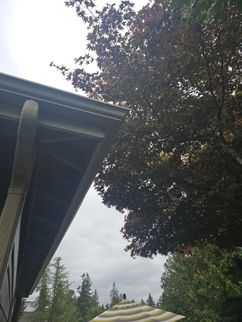
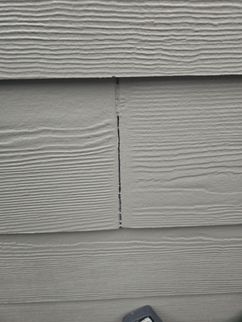
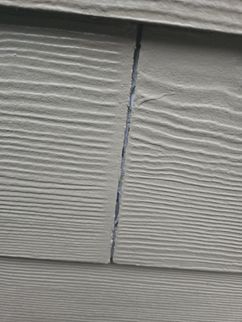
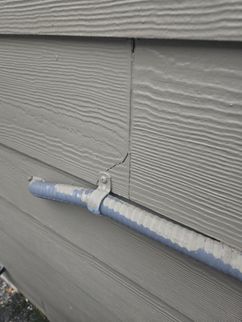
.png)
.jpg)
.jpg)
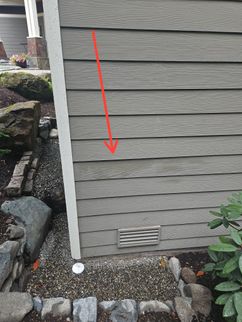
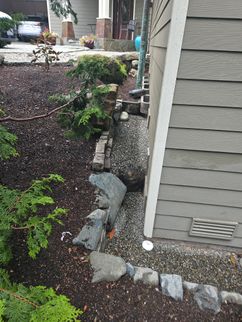
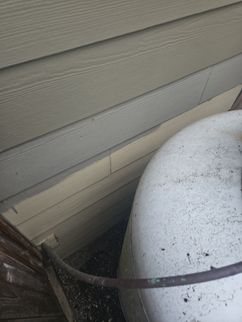
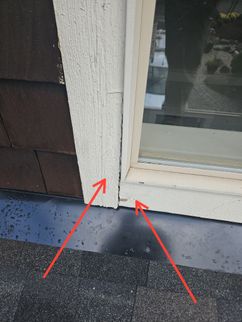
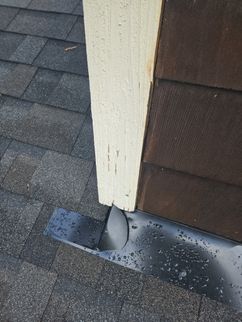

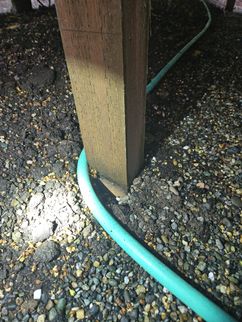
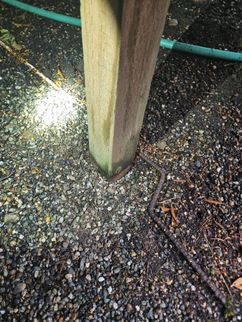
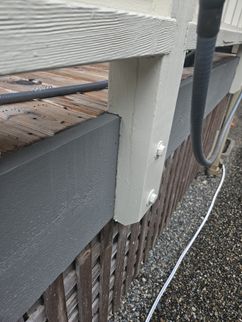
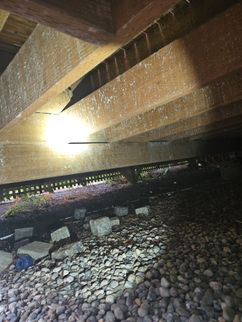
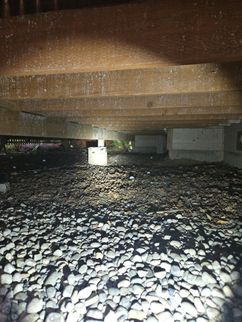


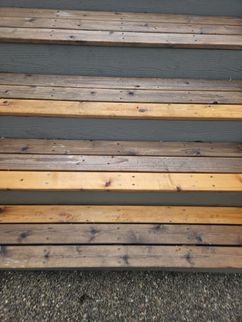
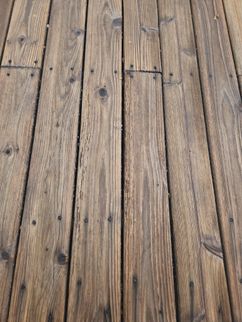
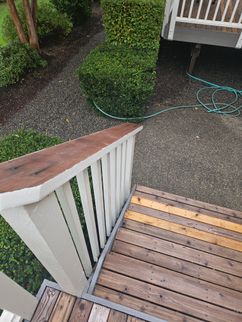
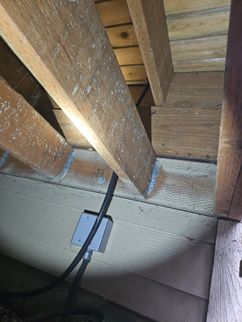
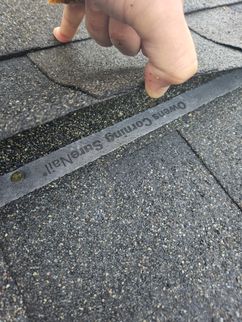
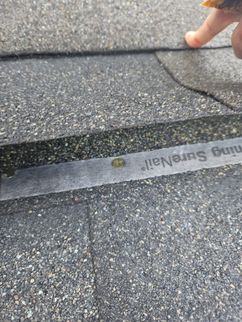
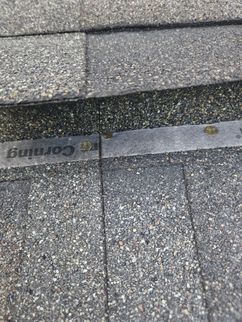
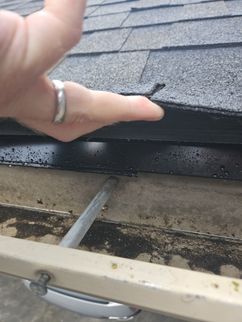
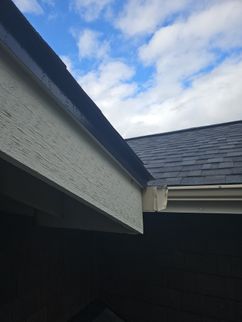
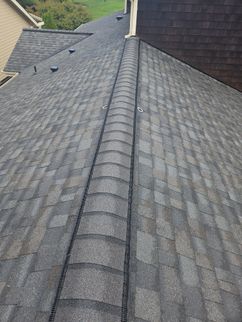

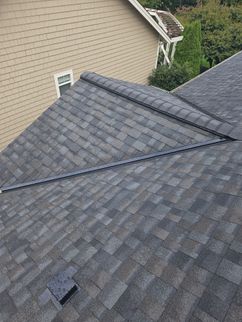


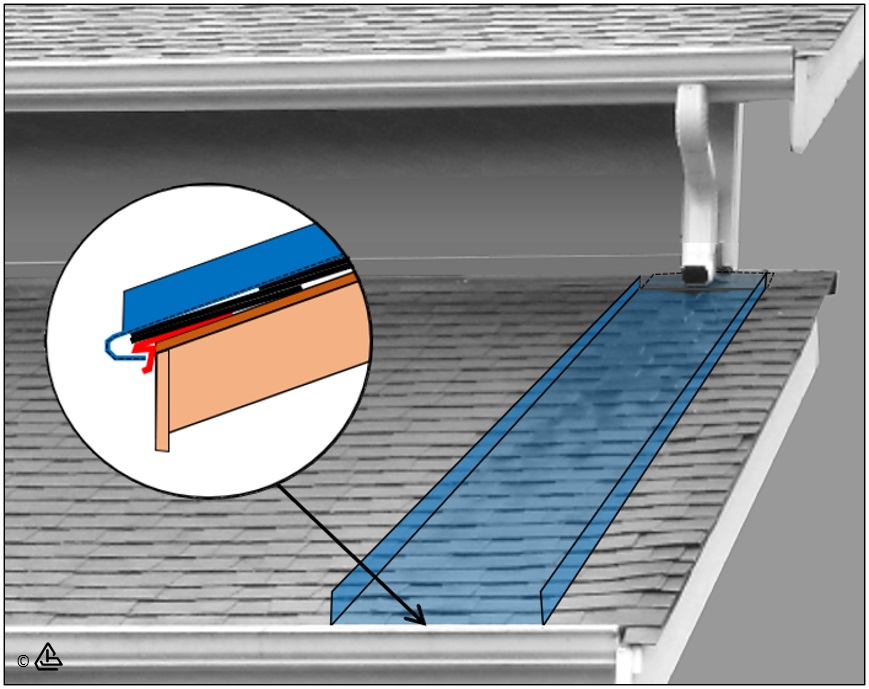

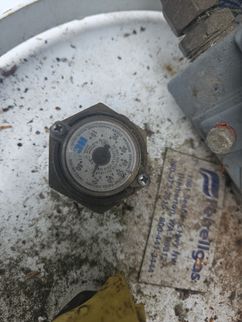
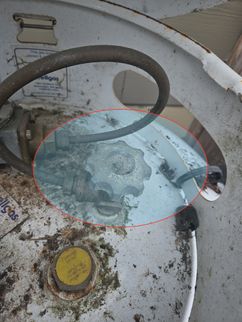
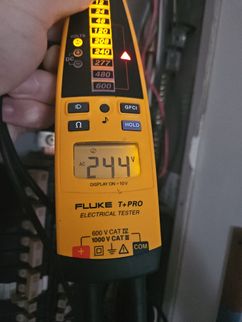
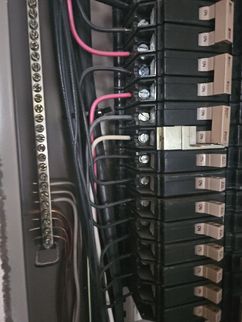
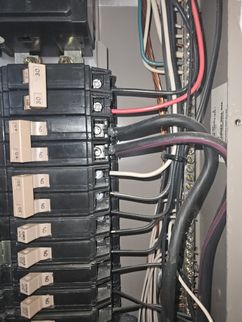

.jpg)
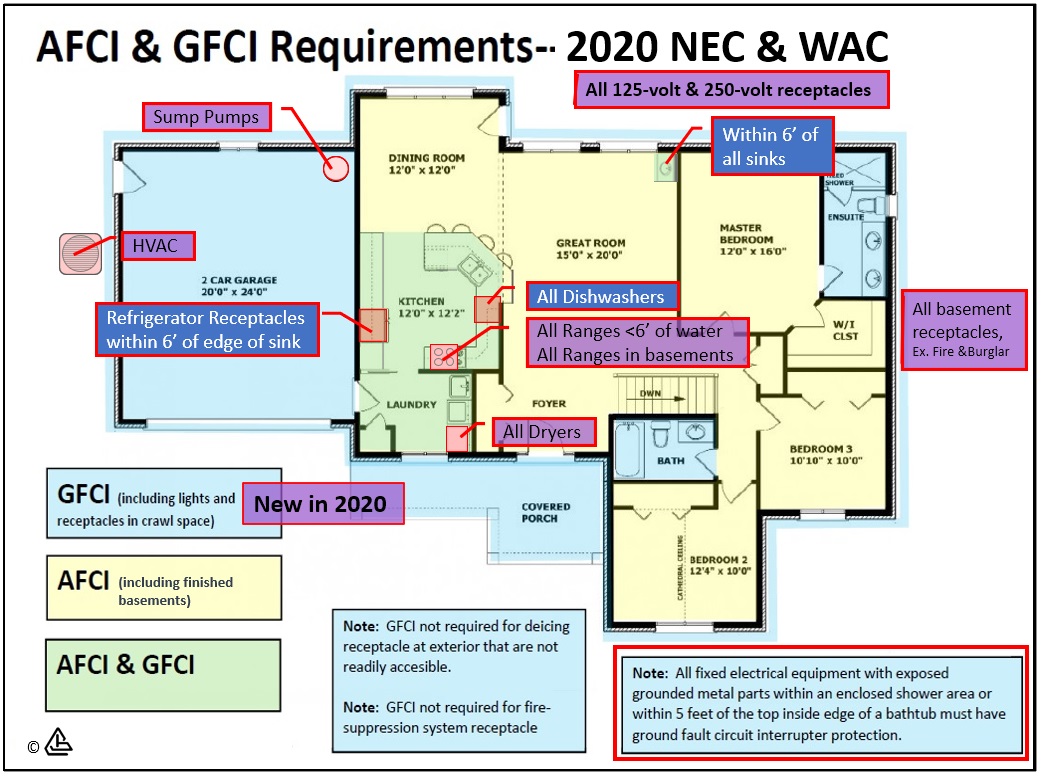


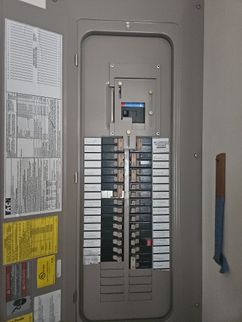
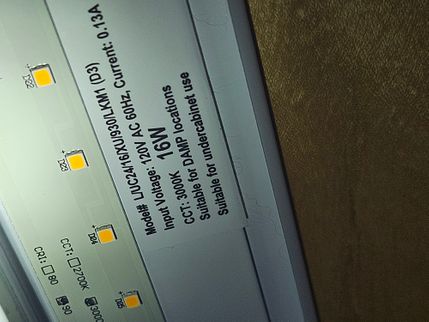
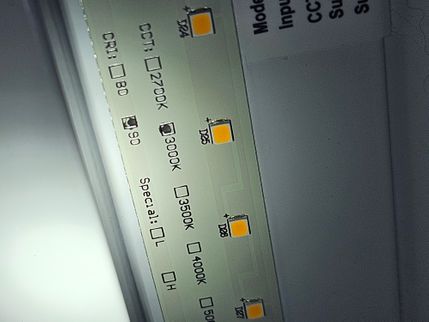
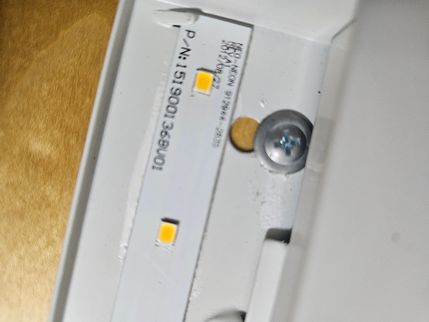
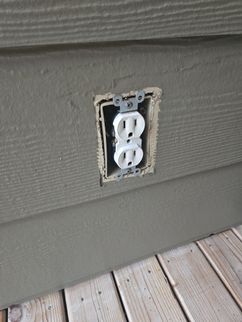
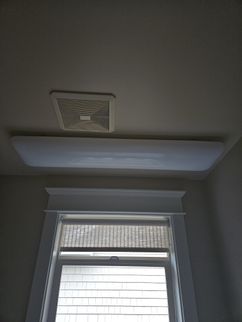
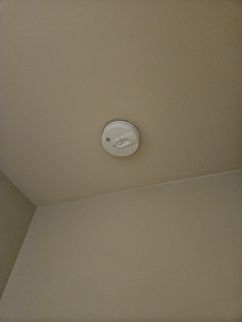
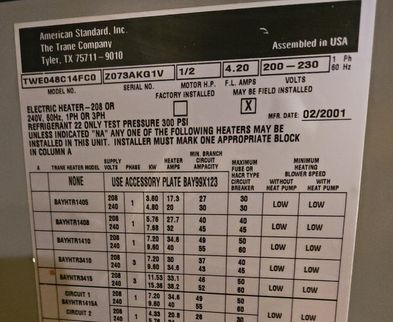
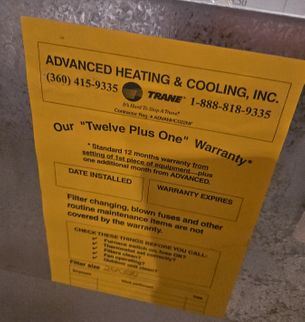
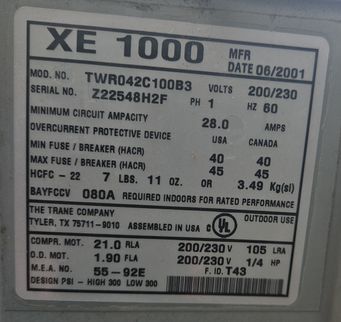


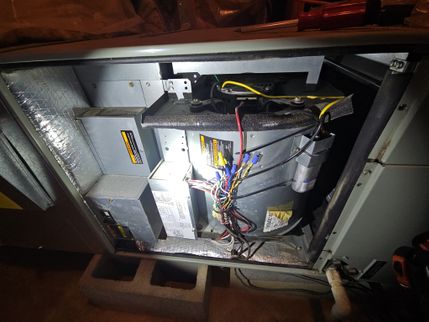


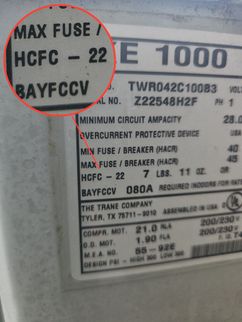
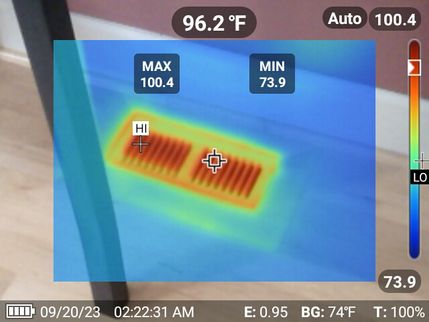

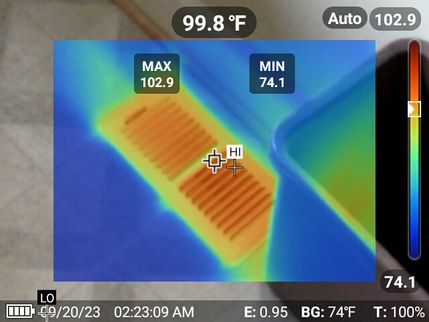

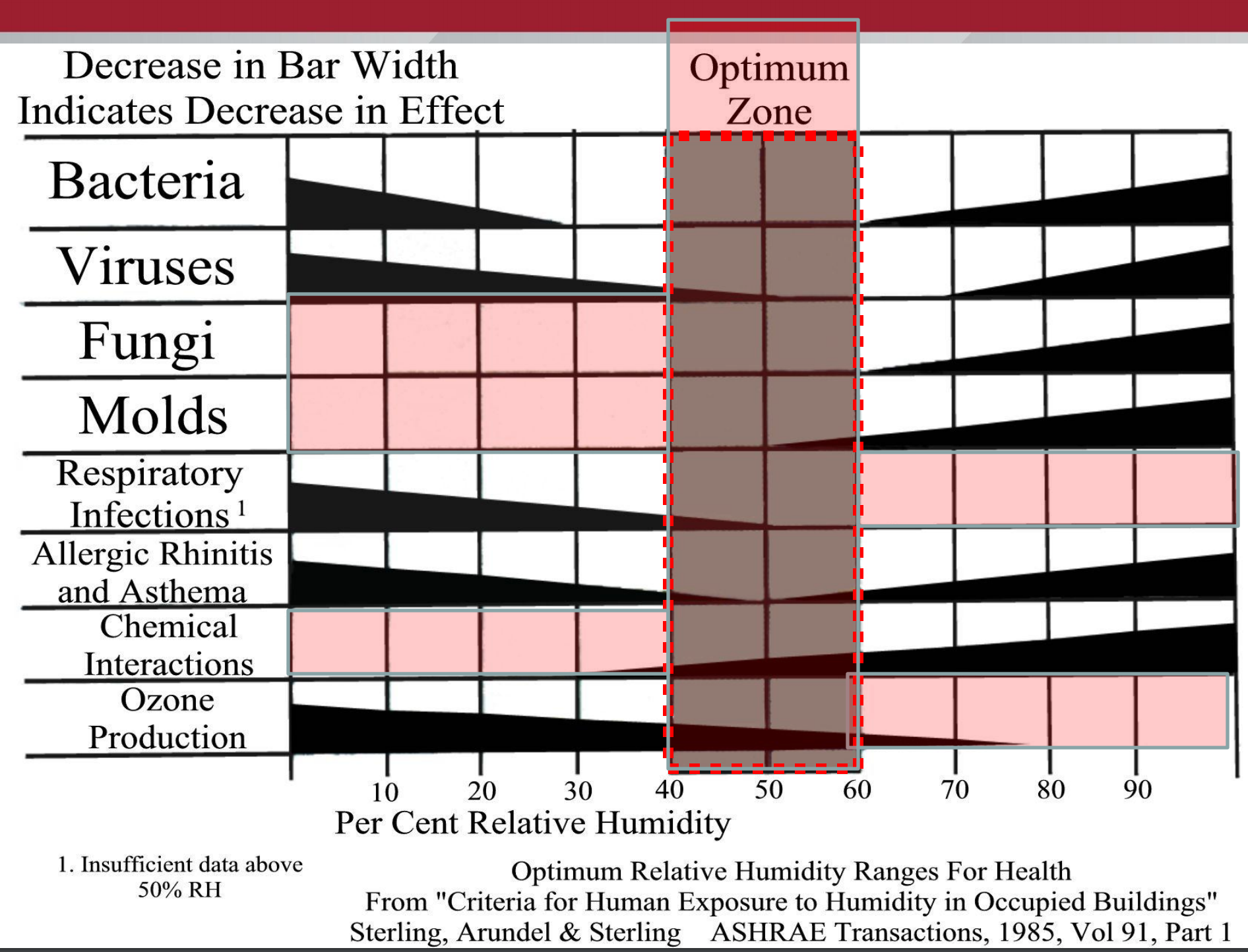
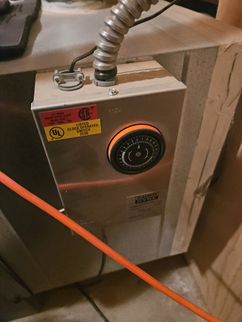
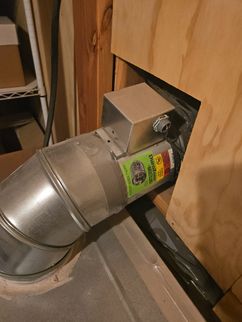

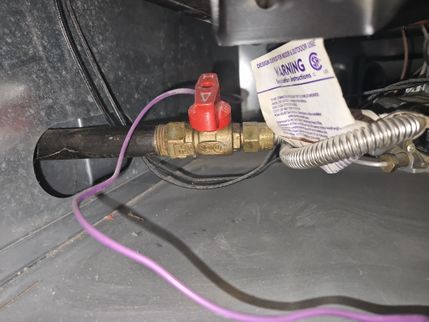
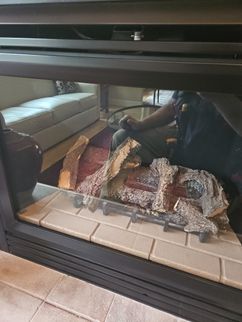
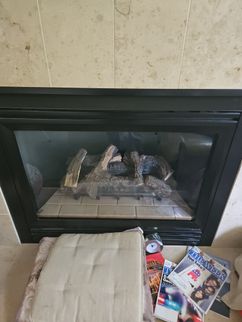

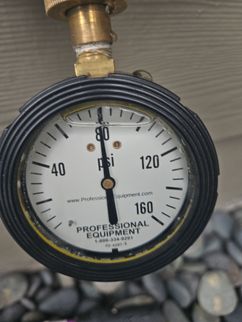

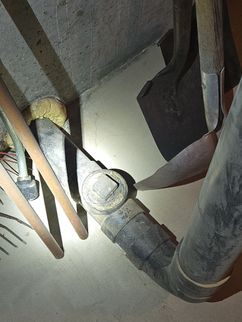


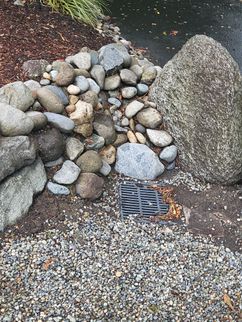
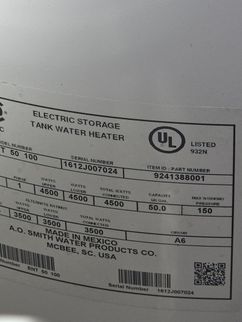
 (1) (1).jpg)

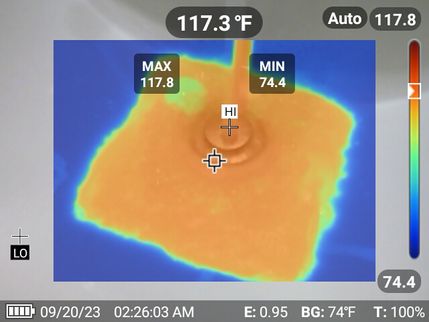
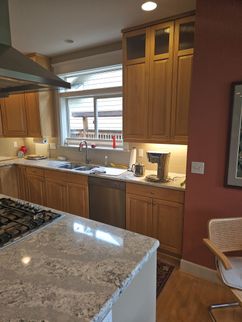
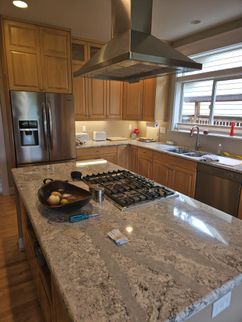
.jpg)
.jpg)
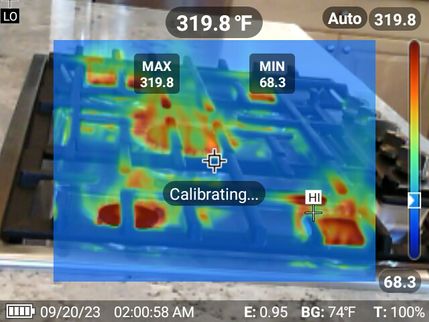
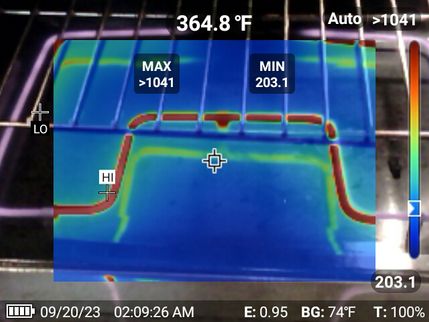


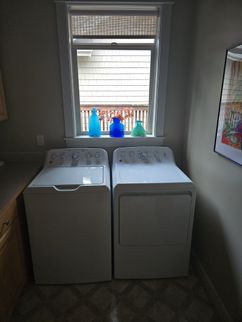
.png)
.png)
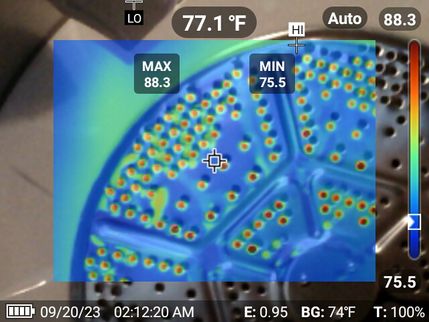
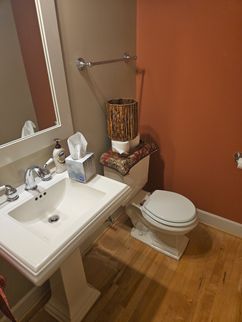
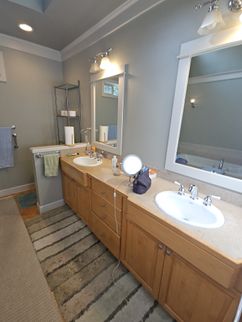
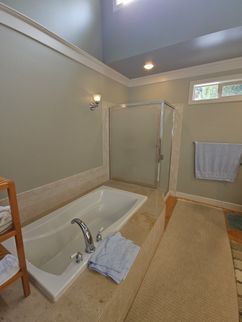
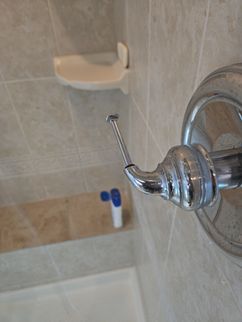
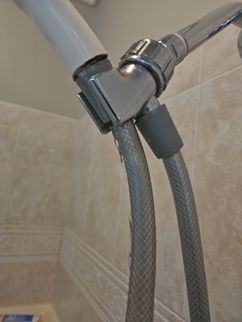
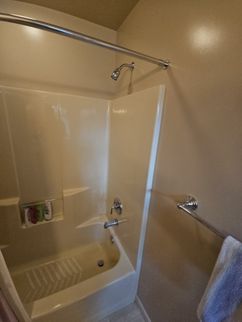
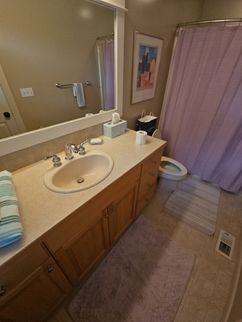

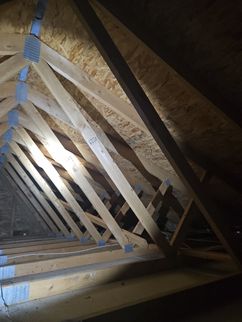
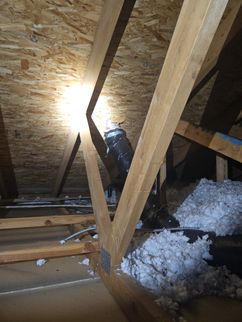
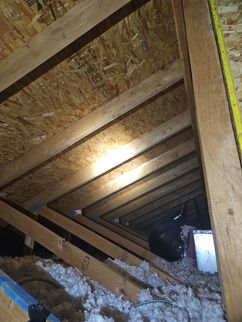
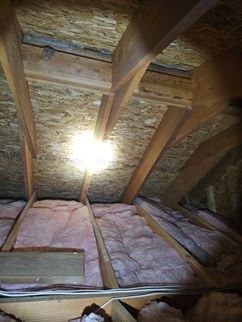
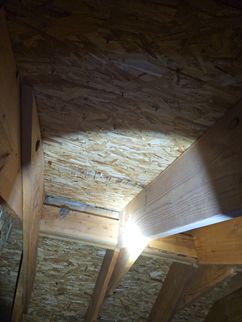
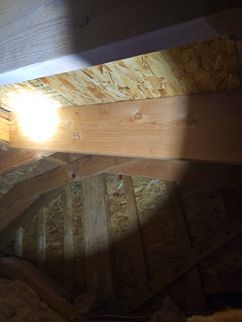
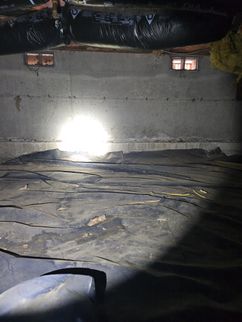
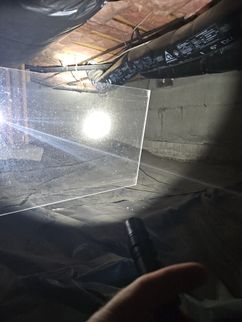
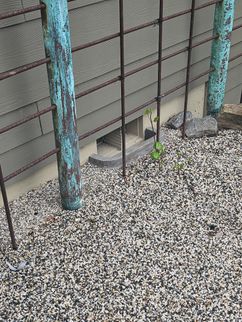
.jpg)
